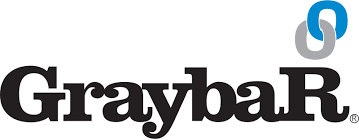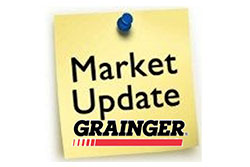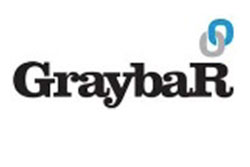Graybar Delivers Over 8% Growth in 2018

Last week Graybar announced a record year with sales exceeding $7 billion and a 100% improvement in net profit.
So, just like we reviewed WESCO and Grainger’s end of year annual calls, we reviewed the Graybar 10-K to identify items of interest.
From the Graybar 2018 10K (commentary is italicized)
- 2018 sales were $7.2 billion, an 8.6% sales
increase (exceeded other publicly held
national chains in the electrical distribution industry.)
- Construction was up 10.3% (this significantly outpaced the market. Presumably project based given focus on lighting. Perhaps data center work given data centers are a strength of Schneider Electric. Counter isn’t a focus with it being reportedly <3% of sales, but says they can be very effective to medium / large contractors. Small contractors are not their focus.)
- Commercial, Institutional and Government was up 6.9%
- Industrial and Utility was up 5.6%
- Gross margin was $1.38 billion, or 19.2% (up .2% due to “ongoing gross margin rate improvement initiatives”. This is something that all distributors should be looking at. Part is purchasing / supplier relations responsibility – pricing, SPAs, rebates, dating, returns, etc. Part is operational productivity.)
- 289 locations in US and Canada
- Serve 145,000+ customers with 4400 people in sales, of which 2800 are inside / outside salespeople and the remainder in sales support roles (so, essentially, .6 people to every 1 inside / outside salesperson). Overall the company has 8700 employees so 50% are either outside or inside sales. A potential benchmark to consider.)
- Largest customer is only 1% of sales (so well diversified albeit no mention of electrical vs data com business or small, medium and large customer bases.)
- Don’t do any manufacturing nor contract to manufacturer
- Estimate top 5 distributors have approximately 30% of market
- Mention that digitalization is “becoming increasingly important to both manufacturers ands distributors in our industry” driven by “customers’ omnichannel buying preferences and their desire to increase efficiency and productivity. (code for change is coming and we’re making investments)
- Business mix, which is consistent with 2017, is
- Construction is 59.6% of sales
- Industrial & Utility is 21.3% of sales
- Commercial / Institutional / Government is 19.1% of sales
- There was no mention about what % of the business is electrical vs datacom.
- 110,000 products stocked in warehouses (which means, at a minimum, this should be on their website. As a regional / local distributor, it’s important for your website to carry everything that is at least stocked in your warehouse. Your site is even more effective if it carries, virtually, everything that you’ve sold, other than specials, or could sell. And if you pay on a cost / SKU basis and your product content isn’t maintained, you’re bound to miss some opportunities.)
- Material is stocked in 19 regional distribution centers.
- Graybar fills 55% of customer orders, dollar-wise, from its warehouses, up from 50% in 2017.
- 50% of products are purchased from their top 25 suppliers.
- The company contributed over $80M to its defined benefits pension plan and in non-qualified benefits.
- In July 2016 Graybar acquired Cape Electric. At the time, the acquisition cost was $59.9M. According to a Graybar press release at the time, Cape Electric’s 2015 sales were $126 million (or 47.6% of sales.)
So, where does this put Graybar versus other publicly held companies?
Baird Equity Research shared some observations:
- 2018 growth of North American publicly held electrical distributors:
- Graybar 8.6%
- Rexel 6.1%
- WESCO 5.7%
- Anixter 4.1%
And Baird’s 2018 Electrical Distribution Survey projected electrical sales growth of 6%, and DISC’s projections were comparable. So, market beaters are Rexel (barely) and Graybar, which highlights their strengths in contractor execution (albeit probably at different elements of the contractor size spectrum.)
- Over 3 years each company’s CAGR is
- Graybar 5.0%
- Anixter 2.5%
- Rexel 1.5%
- WESCO 1.5%
Questions
- What does this say about strategy, market focus, resource deployment, execution of each of these companies?
- Whom is the strongest competitor to you (meaning distributors) locally?
- What is Graybar doing to outperform these
chains?
- Execute to capture more lighting projects?
- Deliver a better eCommerce solution?
- Partner / support manufacturers?
- Market to customers?
- Build relationships with manufacturers and contractors?
- Manage projects
- Have better inside sales staff?
As an industry mentor told me years ago, “the electrical distribution business is a local business.” Local relationships are needed to capture contractor business and to deliver on commitments.
Graybar delivered on its commitments to many of its customers in 2018 … to the tune of a record sales year.























